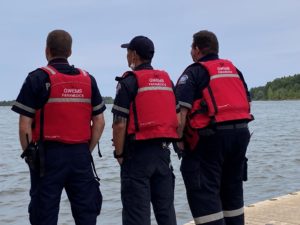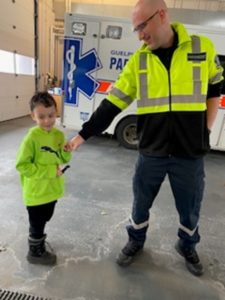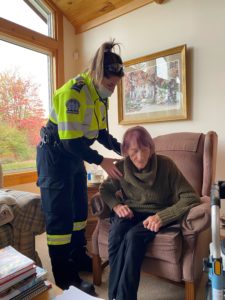
On this page
Is there a fee for ambulance service?
The hospital that you were transported to, will bill you an ambulance co-payment charge. This is payable to the hospital. This co-payment is $45 for ambulance services rendered. This is a charge set by Ministry of Health and Long-Term-Care. For more information visit the Ministry’s website.
How do I request an ambulance call report?
We are responsible for the safe storage and proper release of all personal health information in accordance with the Personal Health Information Protection Act. If you require information regarding a patient or an ambulance call report, email [email protected] call 519-822-1260 extension 2605.
What is an offload delay?
An offload delay is a situation that occurs due to limited beds available at the hospital, so patients remain on paramedic stretchers.
Where can I send a “Thank You” note for the paramedics who helped me?
Whether in person or by mail:
Guelph-Wellington Paramedic Service
Administrative Offices
160 Clair Road West, Guelph, ON N1L 1G1
Monday to Friday, 8:30 a.m. to 4:30 p.m.
Or you can post your thank you messages and stories of your experience with GWPS by tagging @gwparamedic on Twitter and Instagram

How do I become a paramedic?
Visit our web tab here to learn more about the required skills, qualification and education required to be a paramedic. In addition, check for current and/or future employment opportunities.
What area does Guelph-Wellington Paramedic Service cover?
All of Wellington County and the City of Guelph
What is the Community Paramedicine Program?
The Community Paramedicine program is a nonemergency program with the goal to increase access to health and community services that would better support individuals in need. All together, this program aims in reducing the 911 dependency and number of visits to the hospital and emergency room.
This program includes scheduled check ups, health assessments and in home safety assessments by certified Guelph-Wellington Paramedics.
More information about the Community Paramedicine Program.

When driving and an ambulance is approaching with its emergency lights and/or sirens on, what should I do?
In the situation that you see an emergency vehicle approaching react quickly but calmy. Use your signals to alert others that you will be pulling over.
You will want to stop your vehicle, if it is safe to do so, and move to the right-hand lane out of the way of the approaching ambulance. Do not move onto the shoulder of a roadway as emergency vehicles may choose to travel on it to avoid vehicles and or blockages.
For more information please visit Ontario.ca > Dealing with particular situations.
